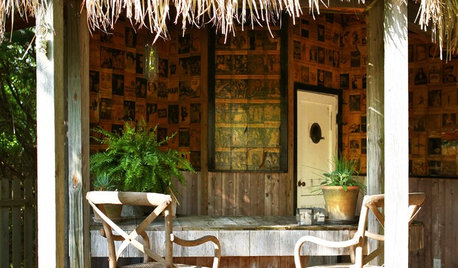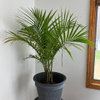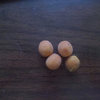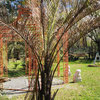Quito coconut palm and other coconut variety palms
bananafan
10 years ago
Related Stories

GREEN DECORATINGGo Cuckoo for Coconut Furniture and Surfaces
Crack open a lesser-known ecofriendly design option: tiles, flooring, tables and more made from coconut shell and palm wood
Full Story
LANDSCAPE DESIGNCelebrate a Sunny Climate With the Right Leafy Palm for Your Site
So you get freezes or floods. So your garden is small. These palms send excuses riding off into the tropical sunset
Full Story
DECORATING GUIDESTake Your Home Tropical With Caribbean Chic
Give winter the boot with the colors, fabrics and furniture of sophisticated island style — not a palm tree in sight
Full Story
DECORATING GUIDESSo Your Style Is: Tropical
Easygoing and natural with an exotic allure, rooms designed with a tropical feel exude warmth and graciousness
Full Story
GARDENING AND LANDSCAPINGHow to Make a Pond
You can make an outdoor fish paradise of your own, for less than you might think. But you'll need this expert design wisdom
Full Story
DECORATING GUIDES10 Ways to Give Your Hospitality a Tropical Touch
Treat guests to the resort treatment with blossoms, fruit and artwork that stir up an air of the exotic
Full Story
TROPICAL STYLEAdd Some Tiki Style to Your Summer
Even the landlocked can infuse their home or yard with some South Pacific island flavor
Full Story
EARTH DAY5 Ideas for a More Earth-Friendly Garden
Consider increasing the size of garden beds, filtering rainwater and using plants to reduce energy use
Full Story
MOST POPULAR33 Magic Household Cleaning Tips
Houzzers from around the world share their tips for transforming housework into child’s play
Full Story
LOFTSRoom of the Day: A World Traveler’s Eclectic Loft
His favorite things from Asia, Africa and South America fill this designer’s colorful Vancouver home
Full StoryMore Discussions









tropicalzone7
bananafanOriginal Author
Related Professionals
Ashland Landscape Architects & Landscape Designers · Deer Park Landscape Architects & Landscape Designers · Hyattsville Landscape Architects & Landscape Designers · Sahuarita Landscape Architects & Landscape Designers · Alexandria Landscape Contractors · Hicksville Landscape Contractors · Oak Forest Landscape Contractors · Rosemount Landscape Contractors · Seven Hills Landscape Contractors · Boise Window Contractors · Everett Window Contractors · Marietta Window Contractors · Crestwood Window Contractors · Mount Kisco Window Contractors · Wilmette Window ContractorsAxel
bananafanOriginal Author
Axel